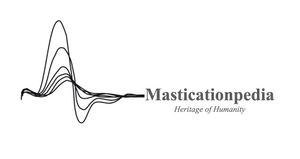As can be seen from the 'Book Index', the scientific editorial work is what that Gianni Frisardi, who gave the idea of founding Masticationpedia, would have liked to find 40 years ago when he began to take an interest in 'Masticatory Rehabilitation'. At the same time, the project is also a pharaonic adventure given the vastness of the topics covered.
This requires the participation of the whole 'Scientific Community' to hope to reach the paradigmatic conclusion of normalizing the 'Masticatory function' to the Central Nervous System responses rather than to the gnathological axioms.
For these reasons the work has been divided according to Kuhn's phases which are most decisive for the paradigmatic changes in science which are, in fact, phase 2 which corresponds to Normal Science; phase 4 which corresponds to the Crisis of the Paradigm and phase 5 which kicks off the scientific revolution called Extraordinary Science.
| NORMAL SCIENCE | CRISIS OF PARADIGM | EXTRAORDINARY SCIENCE | |||||||||
|---|---|---|---|---|---|---|---|---|---|---|---|
| Introduction | Research Diagnostic Criteria (RDC) | ||||||||||
| Logic of medical language | Masticatory cycles | ||||||||||
| The logic of Classical Language | Jaw opening width | ||||||||||
| The logic of the Probabilistic language | Speed of mandibular movement | ||||||||||
| Fuzzy language logic | Complexity of chewing kinematics | ||||||||||
| System logic | |||||||||||
| The Complex Systems | |||||||||||
| Logic of medical language: Introduction to quantum-like probability in the masticatory system | |||||||||||
| Conclusions on the status quo in the logic of medical language regarding the masticatory system | |||||||||||
|
|
Masticatory Neurophysiology
| |||||||||
| Hemimasticatory spasm | Temporomandibular Joint | Are we sure to know everything? | |||||||||
Hemimasticatory spasm
|
|
||||||||||
| Bruxism | Mandibular kinematic replicators | ||||||||||
|
|
||||||||||
| Occlusion and Posture | Transcutaneous Electric Nerve Stimulation | ||||||||||
|
|
||||||||||
| Orofacial Pain | Electromyography (EMG) | ||||||||||
|
|
||||||||||
| Are we sure to know everything? | Conclusions to the Paradigm crisis section | ||||||||||
|
|
||||||||||
| CRISIS OF PARADIGM | |||||||||||
|---|---|---|---|---|---|---|---|---|---|---|---|
| Research Diagnostic Criteria (RDC) | Mandibular kinematic replicators | Electromyography (EMG) | |||||||||
|
Jaw opening width Speed of mandibular movement Complexity of chewing kinematics |
Advantages and limits of Kinematic replicators
Pantography Axiography Electrognatography |
EMG Interferential pattern
EMG at rest position Quantitative analysis of the EMG Fourier transform Wavelett | |||||||||
| Temporomandibular Joint | Transcutaneous Electric Nerve Stimulation | Conclusions to the Paradigm crisis chapter | |||||||||
| Computerized Tomography of the TMJ
Magnetic resonance imaging of the TMJ |
Free way space before stimulation
Free way space after stimulation Closing trajectory from TENS |
Incompleteness in the 'Research Diagnostic Criteria'
Need for a new paradigm | |||||||||
| Masticatory Neurophysiology | Sensory network | Electrophysiological overall view of the Masticatory System | Trigeminal System Connectivity | ||||||||
|
Center of the Masticatory Pattern Mesencephalic mechanisms Trigeminal Motor nucleus |
Proprioceptive mechanisms
Neuromuscular spindles Sensory mechanisms from the depressor muscles Golgi Tendon Organs Role of impulses from the neck muscles Periodontal and Oral Sensory Factors Pharyngeal sensory factors Reflex of mandibular closure Sensory factors of the TMJ |
Overall view of the Masticatory System
Trigeminal electrophysiological segmentation Electric Motors Evoked Potentials Magnetic Motors Evoked Potentials Jaw jerk reflex M-wave Masseteric Mechanical Silent Period Masseteric Electric Silent Period Masseteric Laser Silent Period Recovery Cycle of Masseteric Inhibitory reflex |
Definition of the Fundamental Unit
Structural and functional connectivity Separation Understanding of "Emergent Behavior" Connectivity measurement Maximal Neuronal Energy Evoked Bilateral Trigeminal neuromotor organic symmetry Functional motor symmetry Normalization Muscle activation during maximum voluntary contraction and m-wave related in healthy but not in injured conditions: Implications when normalizing electromyography Organic vs Functional Symmetry Neuro Gnathological Functions paradigm Psi Index
| ||||||||
